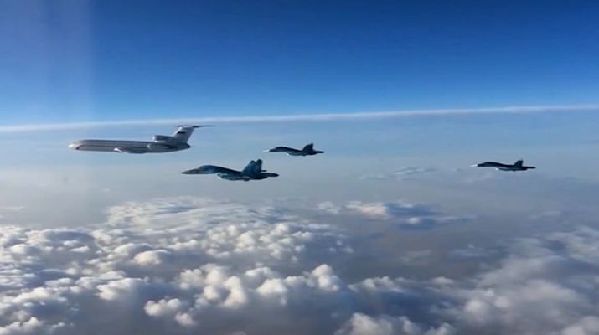A question of orientation
- By Li Ziguo
 0 Comment(s)
0 Comment(s) Print
Print E-mail Beijing Review, March 31, 2016
E-mail Beijing Review, March 31, 2016
Rescue measures in place
Russia has adopted a series of policies to maintain domestic market stability and shift exports from resource-based sectors to other industries. Meanwhile, the Russian Government is trying to pursue the lifting of Western-imposed sanctions, and enhance cooperation with non-Western countries.
There are also some bright spots in the Russian economy despite the large, dark shadow. For example, Russia is coordinating with other prominent oil producers to put a brake on the increasing pace of oil production, which is an important step toward stopping the endless slide of the price of oil. On February 16, Russia and some member states of the Organization of Petroleum Exporting Countries (OPEC), including Saudi Arabia, Qatar and Venezuela, agreed to freeze oil production on the basis of the January level at a ministerial meeting in Doha.
Russia's foreign exchange reserves also remain sufficient. The Russian Government has chosen not to gamble by saving exchange rates. Instead, Russia's financial watchdog allowed exchange rates to float freely, which helped avoid a sharp decline of its foreign currency reserves. Sufficient reserves are important in helping to keep society stable and making people confident in the face of economic hardship. Russia's gold reserve totaled $357.8 billion on August 6, 2015. By February 18 this year, the figure recovered to $382.4 billion. The Western forecast, which predicted Russia's reserves would soon be exhausted, failed to occur. The well-known financial baron George Soros has even said that he believes Russia's foreign exchange reserves would last for "a couple of years."
Along with growing confidence, the outflow of capital has been effectively curbed. In 2014, as much as $153 billion in capital fled out of the country, while in 2015, the figure shrank to $56.9 billion. Russia's balance of international payments has been further consolidated, and it shows the investors have regained confidence in Russia's economy.
Russia has also achieved successful agricultural harvests in recent years. Its annual grain output in the past two years was above 100 million tons; the figure is expected to reach 104.9 million tons this year. In the agricultural year of 2015-16, Russia's grain export could reach 32.8 million tons. If it meets those expectations, Russia will surpass the United States to become the largest grain exporter in the world. As a Chinese saying goes, with food in hands, there is no need to be panic.
Banking has also been stable. Unlike previously, more and more people across Russia have started to save money in banks in recent years. In 2015, there was a 25-percent growth in bank deposits from locals, most of whom opened new accounts using the domestic currency.
In February, the Russian Government announced a new "action plan for the stable development of the society and the economy." Russia plans to invest $12 billion to help the development of agriculture, automobiles, the light industry and machinery manufacturing. Russia's endeavor to find domestic substitutions for imported goods has shown some positive results: In 2015, Russia's food imports dropped 35 percent. The same achievement is likely to be seen in its automobile industry in the next few years.
In spite of the government's bold actions to take countermeasures and save its economy from Western sanctions, the real way out is to find a development path that is suited to its national conditions and can bring long-term prosperity. An economic restructuring and transformation is much needed in order to cure its long-standing woes.
|
|
|
Russian military planes begin to withdraw from Syria on March 15 (XINHUA) |







Go to Forum >>0 Comment(s)